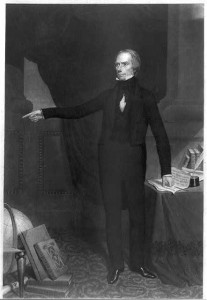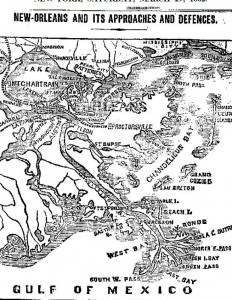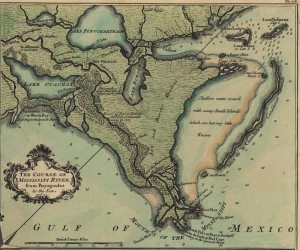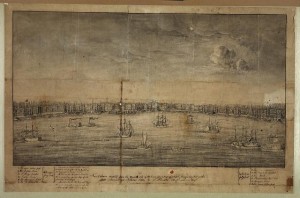Disunion was off the table for the Great Compromiser
150 years ago this week The New-York Times was speculating on Union operations on the lower Mississippi. In a long article that quotes heavily from the Richmond Daily Dispatch the editors try to piece together some information about what the federal forces might be up to and what tactics the rebels are using to defend themselves. The Times gets things going with a patriotic opening paragraph. Here’s a couple excerpts.
From The New-York Times March 29, 1862:
NEW-ORLEANS AND ITS APPROACHES AND DEFENCES.; THE DEFENCES OF NEW-ORLEANS.
Twelve years ago, HENRY CLAY, speaking in the United States Senate, uttered the memorable words: “I say in my place, never will we, who occupy the broad waters of the Mississippi and its upper tributaries, consent that any foreign flag shall float at the Balize, or upon the turrets of the Crescent City — never, NEVER!” It is over a year now since other flags than the Stars and Stripes — the miserable three-barred bunting of rebellion, and the yellow Pelican rag — were raised upon these turrets; and for all that time until now have they flaunted defiance in the face of the nation, and barred out from their heritage those who dwell on the upper tributaries of the father of waters. The time is now at hand, however, if it has not already arrived, when these alien emblems shall be torn down and made the winding-sheets for secession, to be replaced once more on Balize and turret by the flaming symbol of Union and Nationality.
There are various indications that operations have actually been begun against the river and lake defences of New-Orleans by Gen. BUTLER and Capt. PORTER. …
… There are also said to be other formidable obstructions of various kinds in the river, to prevent the passage upward of a fleet. A correspondent at Ship Island, writing recently, says:
“I have conversed with some prisoners recently taken, in reference to the obstructions placed across the Mississippi by the rebels to prevent the passage of Federal men-of-war. From them I learn there is an immense raft of logs, containing eighty thousand feet, stretched across the river at a point called the ‘Jump.’ The raft is secured to the banks of the river, on either side, by heavy chains, which are dropped when any of the Confederate steamers pass. This formidable obstruction is commanded by a strong battery.”
New-Orleans is the great commercial and financial emporium of the South. It is the great Southern cotton emporium. Superior cheapness of transportation by water draws thither all the cotton produced in Middle and Western Tennessee. Arkansas, Eastern Texas and Mississippi. The tobacco, hemp, and the cereals of our vast Western empire find their way thither from the same cause. Half a continent pours its productive wealth into its bosom, and finds thence its way to the markets of the world. It is, in brief, the key to the wealth, the prosperity and advancement of fifteen States, its possession would be of vast material benefit. It would afford us at once the means of forcing the States of Texas, Louisiana and Western Mississippi back to their allegiance, and serve as the point from whence we could force our other rebellious sisters of the Southwest back to their duty. The fact of its capture would inspire the utmost terror throughout the entire South. A moral paralysis would fall upon the boldest spirits of secessionism.
The population of the City, by the census of 1860, was 168,472. This has doubtless been greatly reduced since that time, but, allowing for the operation of all reducing causes, and it still probably numbers considerably rising a hundred thousand souls. If we may not now daily look for news of its full, we may at least anticipate learning what is virtually the same thing — that Gen. BUTLER and Capt. PORTER have captured all its defences, opened up the river, and hold the contumacious city at the mercy of the mortars.
La Balize, Louisiana “was the first French fort and settlement near the mouth of the Mississippi River …”




